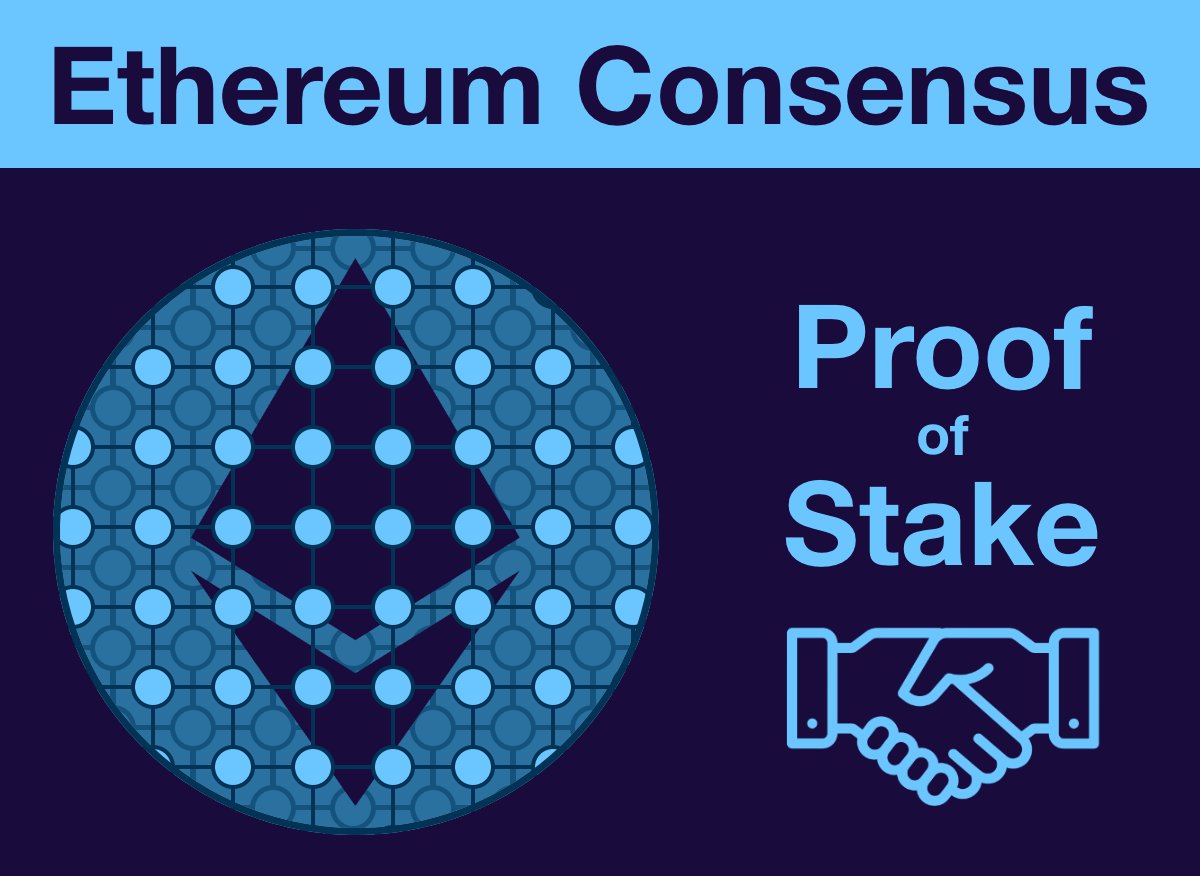
¶ Proof of Stake (PoS)
¶ The World Computer
Ethereum exists between a network of 1,000s of computers (nodes), each running a local version of the Ethereum Virtual Machine (EVM). All copies of the EVM are kept perfectly in sync.
Any individual EVM is a window into the shared state of the World Computer.
This distributed network of EVMs is held in sync via a consensus mechanism. A consensus mechanism is a system by which a leader (block proposer) updates the state of their EVM and the rest of the network trustlessly follows.
The leader then packages all these changes into a block; the rest of the network uses the block to sync their EVM with the proposer's.
¶ The Merge

Until September 2022, the World Computer relied on Proof of Work (PoW) to achieve consensus.
But earlier this year The Merge finally came; Ethereum is Proof of Stake (PoS)!
Before we dive in, let me just address the unasked question: “Was the switch to PoS a good thing for Ethereum?”
The answer is an unhesitating, emphatic YES!
But don't take my word for it, Vitalik has already explained why:
¶ Nodes in the Network
A node is a real-world computer; a validator stakes 32 ETH and has responsibilities to operate and secure the network.
A node runs validator software and a single node can run many validators.
There are currently 8k nodes and ~440k validators.
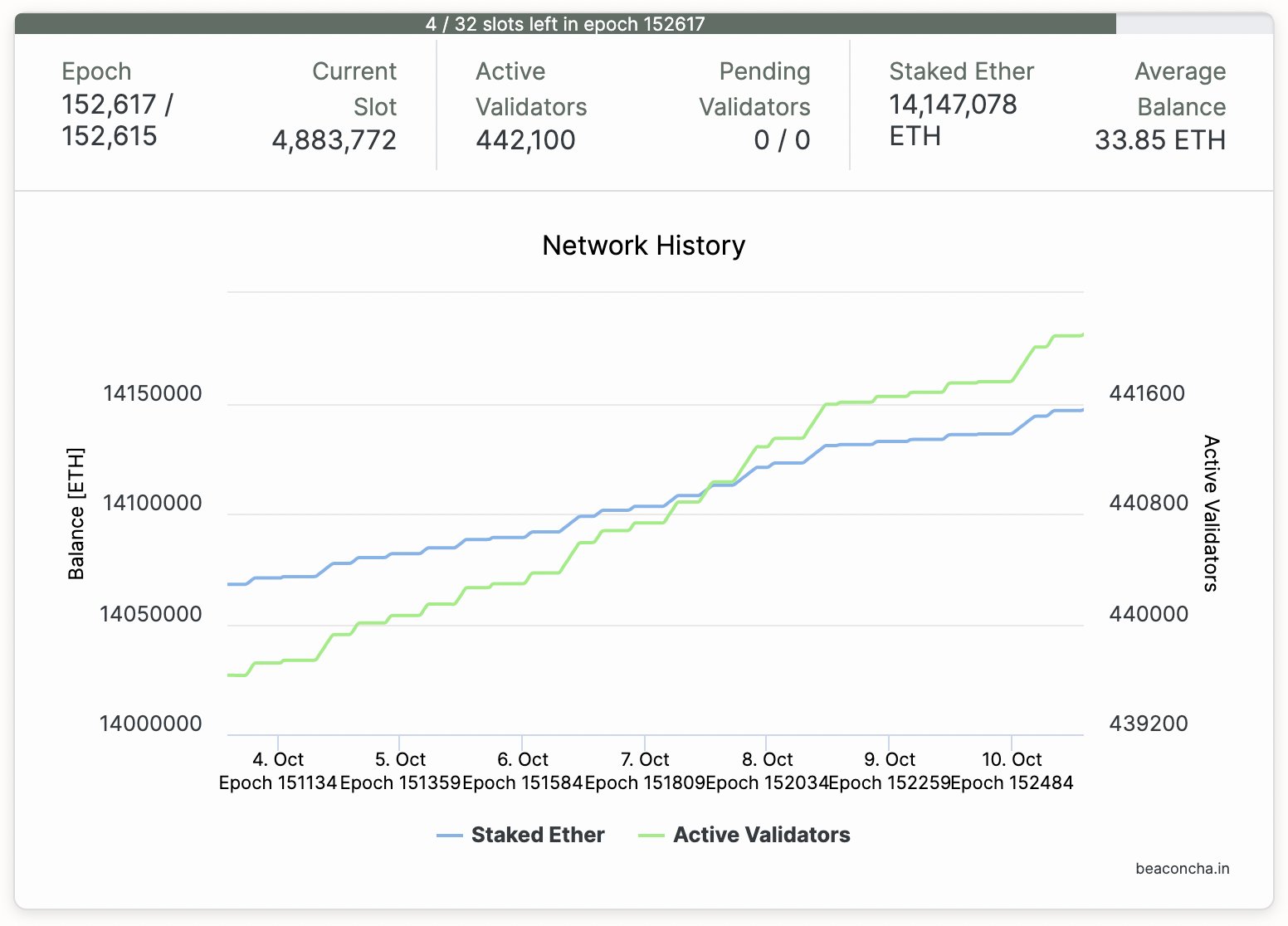 |
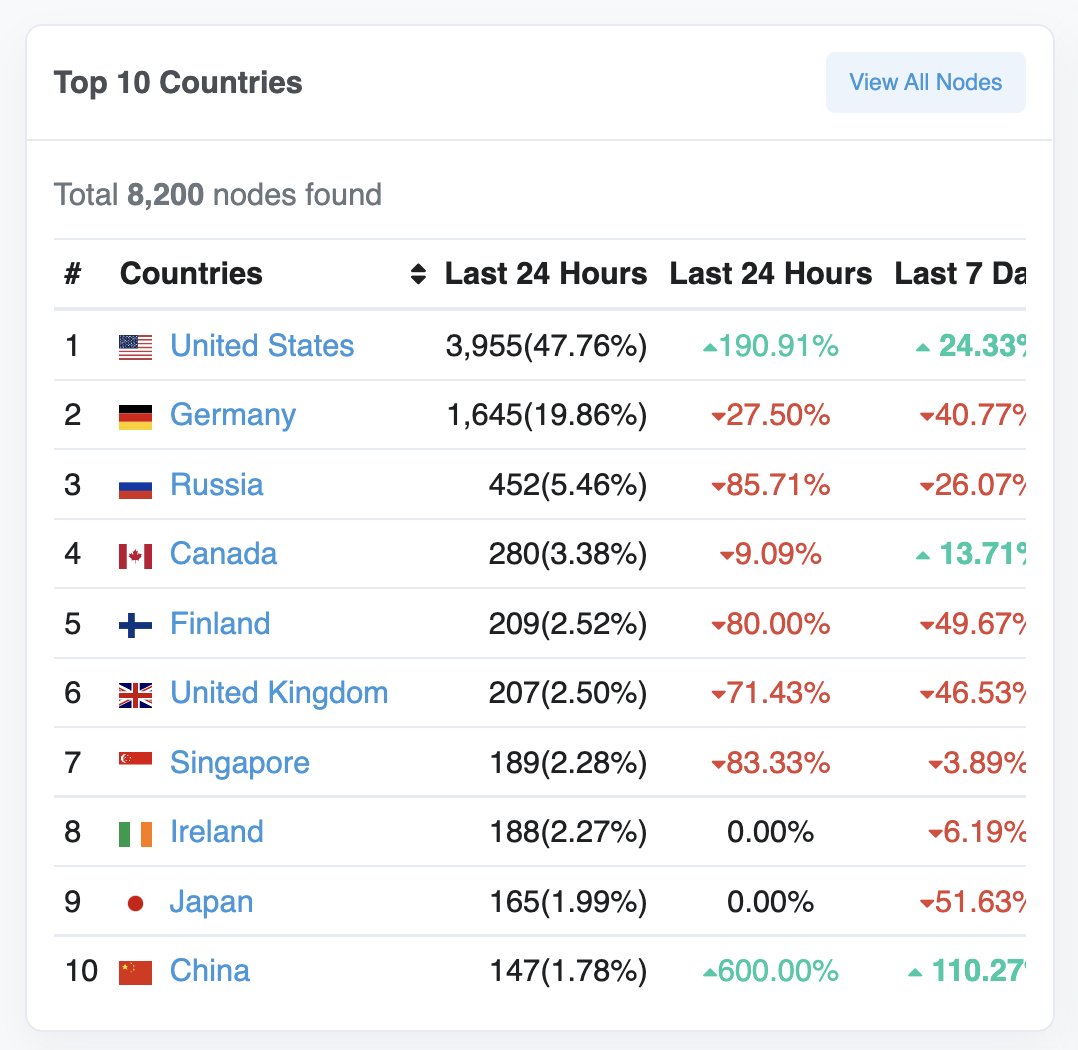 |
¶ Digital Signatures
At the most basic level, the process is based around digital signatures.
A digital signature proves a SPECIFIC validators signed a SPECIFIC message (in our case, a block).
A BLS signature is a special kind of signature that can be aggregated for batched verification.
Digital signatures allow us to hold individual validators accountable. If they act maliciously, they can be identified and the ETH they staked can be slashed.
¶ Slashing
Slashing is the processes of destroying a validators stake and ejecting them from the validator set.
Because validators do not want to lose their investment in resources and infrastructure, slashing ensures that validators stay honest and act in a fashion that does not harm the network.
Slashing is the mechanism that gives PoS its security.
¶ Epoch Cycle
Every 12 seconds, Ethereum opens a new slot, expecting a new block.
Within a block there are thousands transactions, but they execute atomically: either all together or none at all.
An epoch is made up of 32 slots.
¶ Selecting a Leader
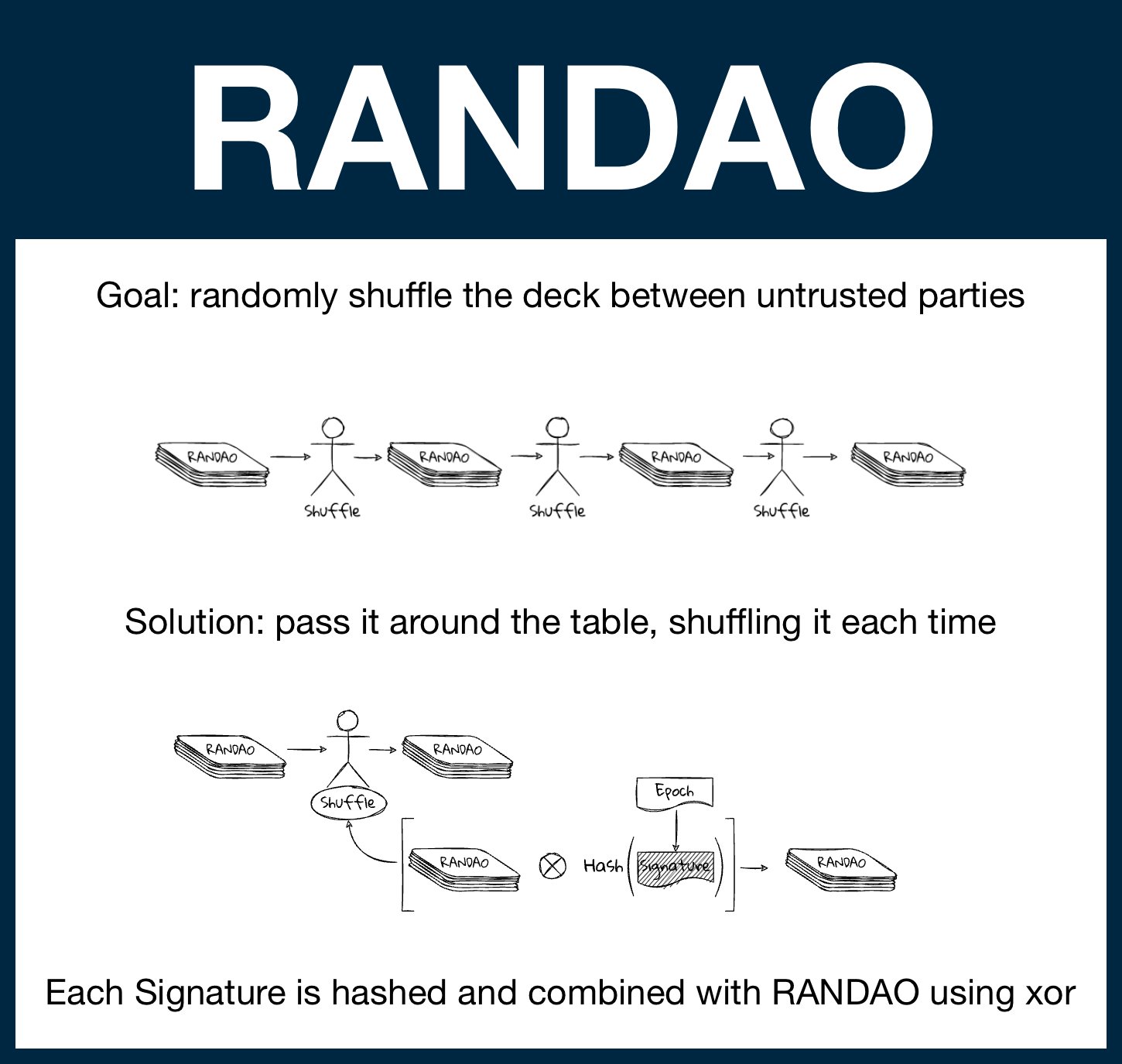
Every epoch, Ethereum shuffles the validator set into 32 committees (one per slot) and each committee into 64 subnets.
The security of the World Computer requires credible randomness during this shuffling, which is delivered by a process known as RANDAO.
¶ Proposing a Block
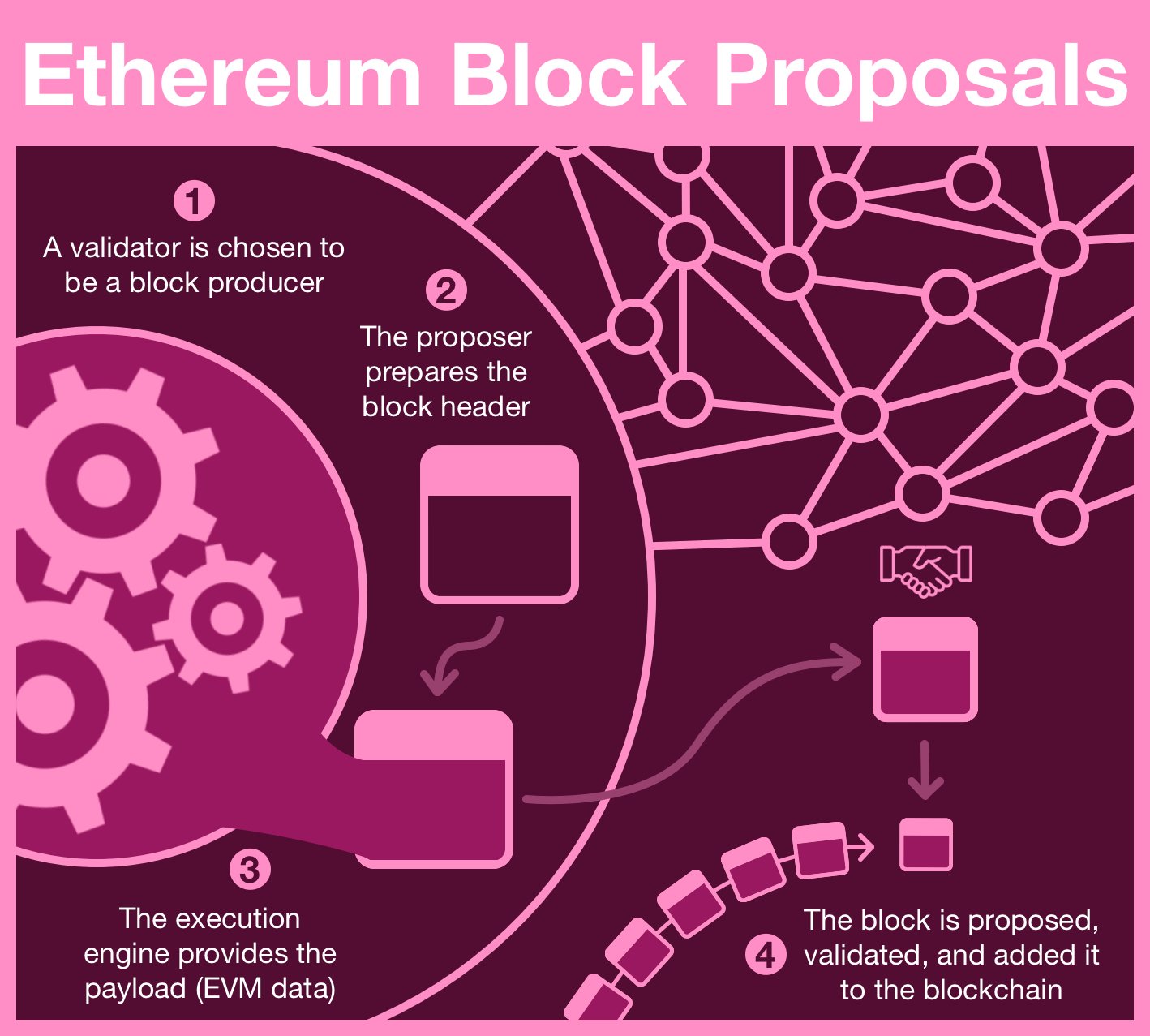
The first member of each committee is designated the block proposer and earns the right to progress the EVM.
The proposer must build (or otherwise source) the block and then broadcast it to the network.
The proposer's stake is at risk if s/he proposes an invalid block.
¶ Updating the EVM
Deep Dive: State Transition Function
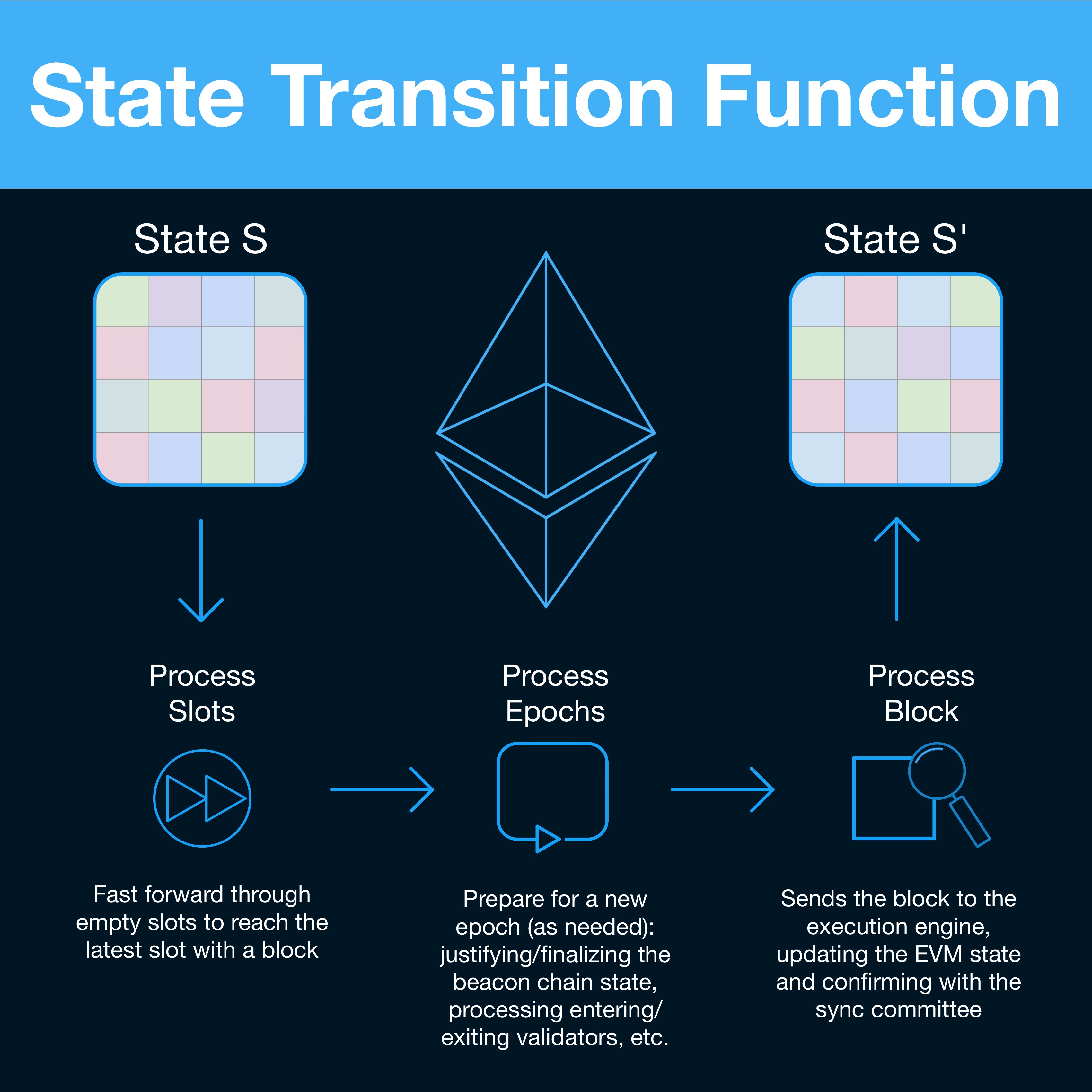
Every validator on the network is listening for a copy of every block. When it receives a new block, it executes the state transition function.
The state transition function is the actual process of updating the EVM (and processing epochs, when appropriate).
¶ Attestation
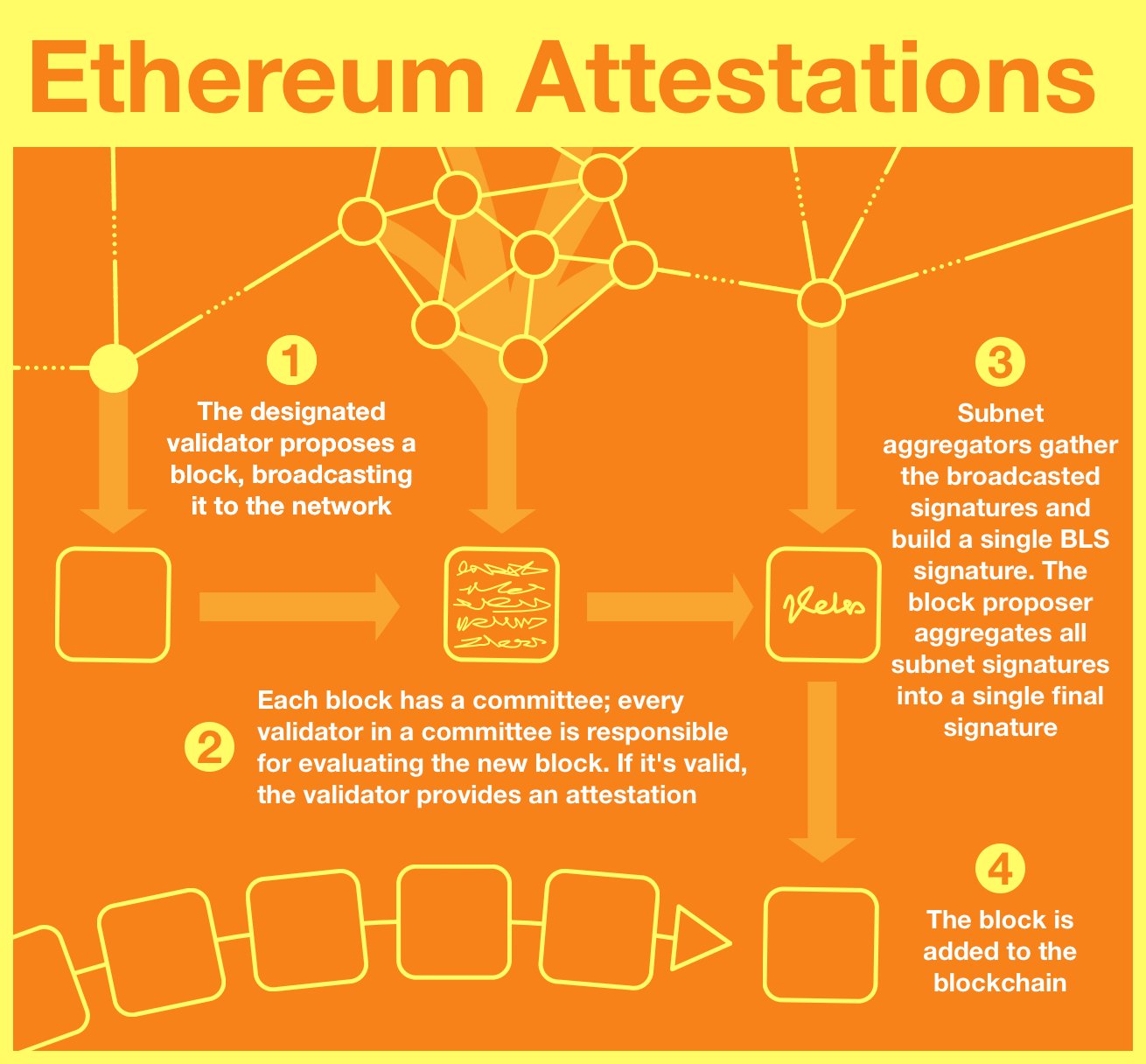
The validators in the committee corresponding with each slot have an additional duty: they must verify the block.
Assuming each block is valid, each committee member creates and publishes a cryptographic signature (attestation), putting their stake at risk.
In a perfect world, this is pretty straightforward; in the real world, things get tricky very quickly.
In sub-ideal network conditions (the vast majority), it's possible that every validator might not receive every block.
¶ Attestation Aggregation
Every slot a new committee becomes active and is expected to provide attestations. 440k validators / 64 committees = ~17k validators/committee.
17k validators poses a problem; it's both too much network chatter and too many signatures to aggregate all at once.
Fortunately, we've already split committees into 64 subnets.
Each subnet consists of ~250 validators, of which 16 are designated as aggregators. As validators review blocks, they broadcast their attestations to their subnet.
All 16 aggregators are attempting to build the same aggregate signatures, but network conditions often make perfection possible.
The best aggregate in each subnet is chosen and aggregated one final time, created a single BLS signature representing the entire committee.
Technically speaking, the aggregation process (obviously) happens after the block is proposed (and therefore created); the final aggregate attestation cannot be added on to it. Instead, it is included in the next block.
Conceptually, it's part of the same slot cycle.
¶ Fork Choice
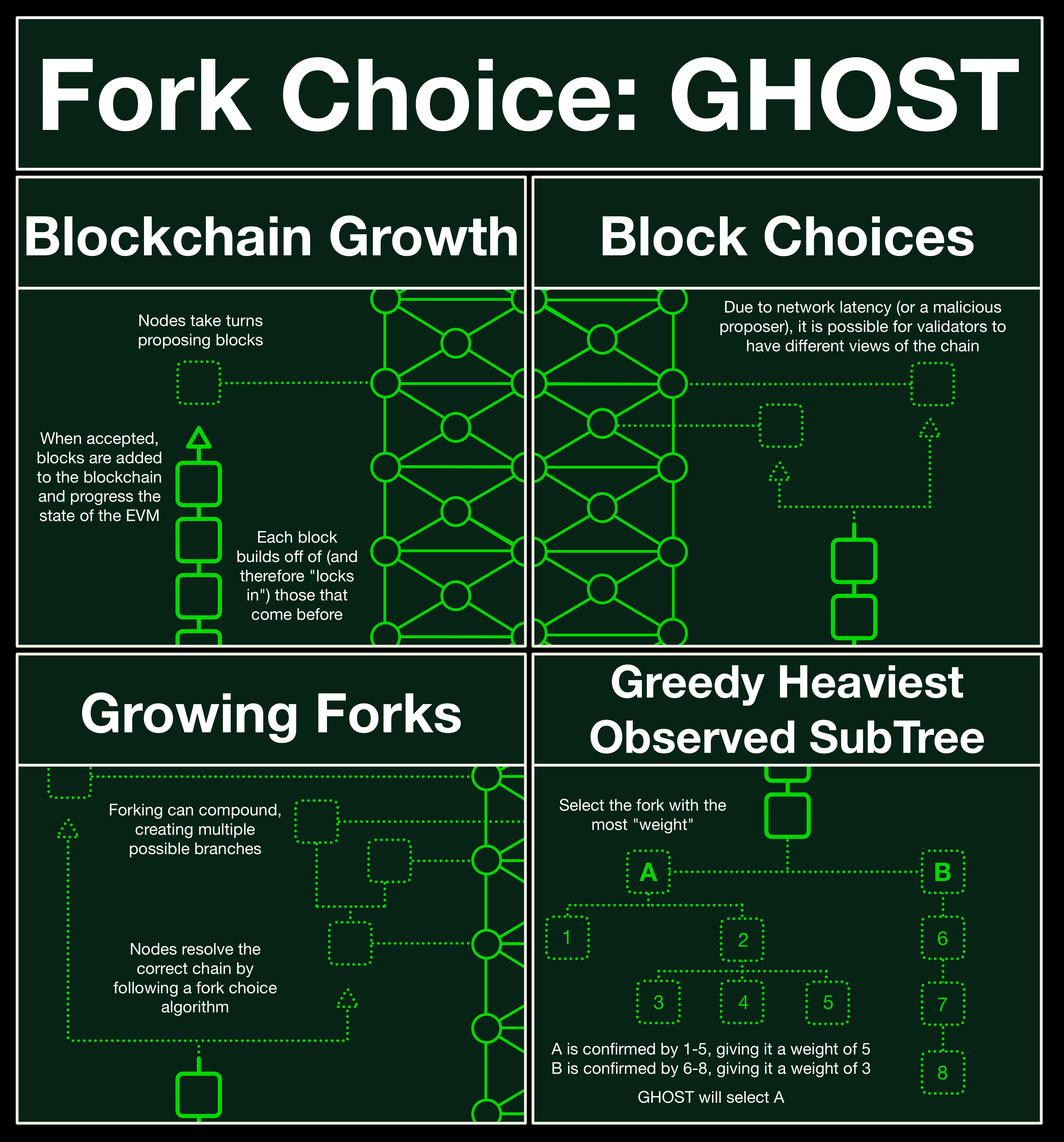
Imagine the impending block proposer didn't receive a copy of the last block; he creates a new block based on the previous state and sends it out to the network. Now our blockchain has turned into a block-fork.
LMD-GHOST is the rule we use to resolve these situations.
¶ Finalization
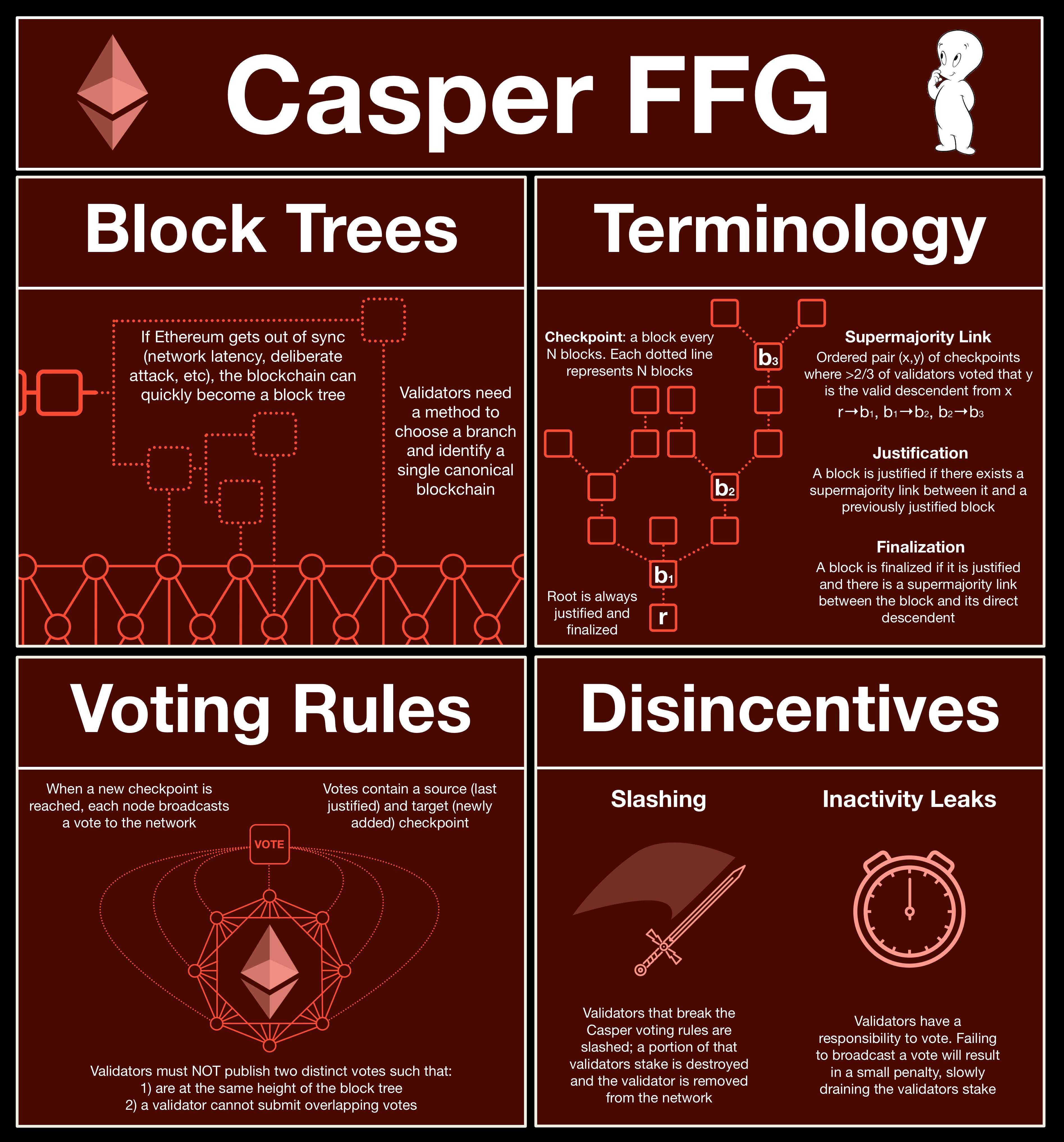
At the end of every epoch, all 32 committees (and therefore every validator) has either proposed or attested; therefore the entire network has voted and made their stake eligible for slashing.
Thus, the epoch is the unit of time we judge finalization on.
Finalization is a mathematical guarantee that Ethereum has fully applied PoS to an epoch; it cannot be reverted without the destruction (via slashing) of at least 1/3 of the ETH at stake (~$6B right now).
If more than 2/3s of the network votes on an epoch, that epoch becomes justified.
If more than 2/3s of the network votes for an epoch that is dependent on a justified epoch, the justified epoch becomes finalized.
These rules are defined by Casper FFG.
¶ Sync Committes
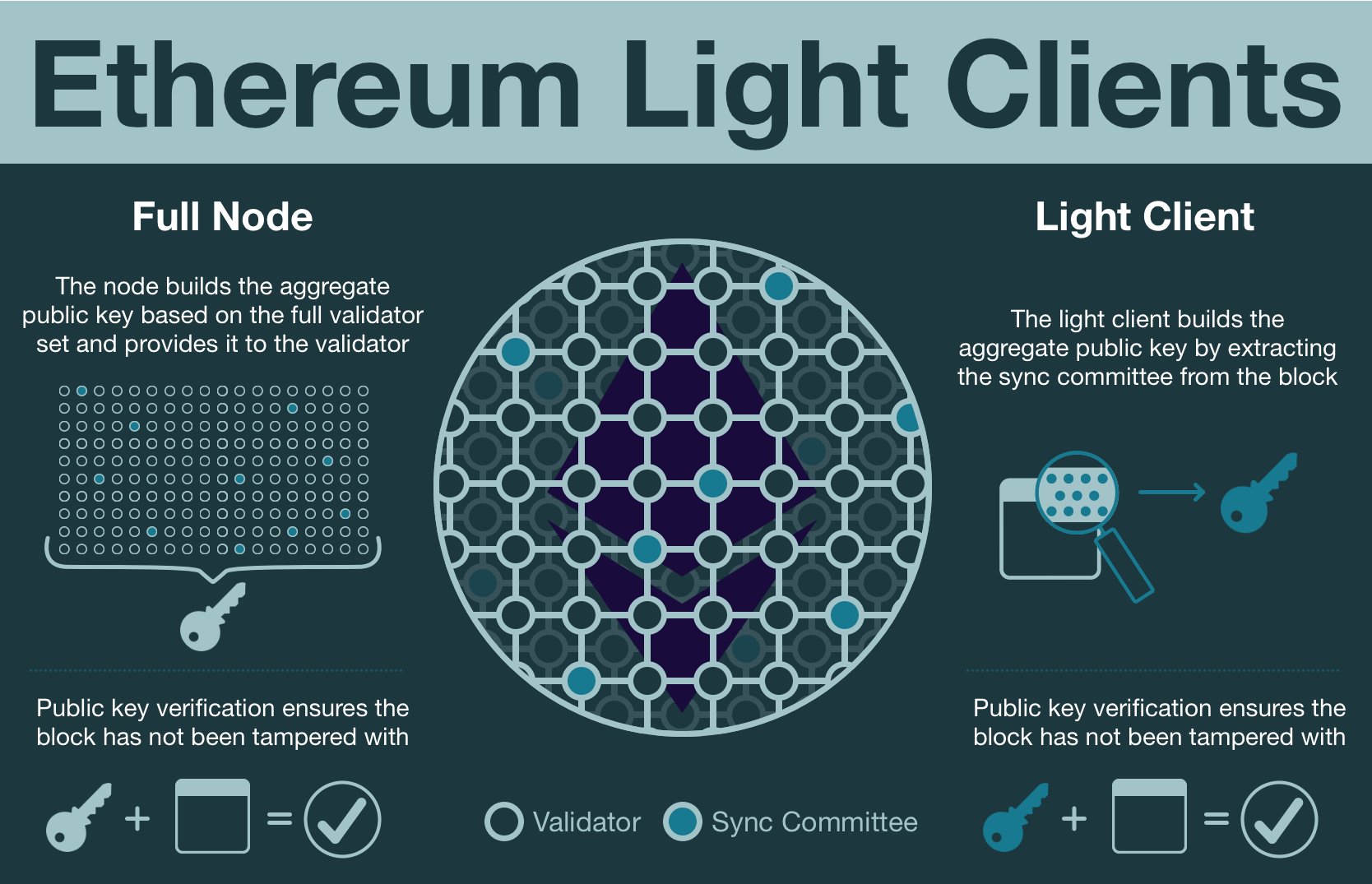
At this point we've nearly finished out Ethereum PoS specifications; as you can see it is complicated. In fact, it is so complicated that many computers with limited resources and/or bandwidth cannot possibly execute it.
Many computers that would be incredibly useful.
And so, before Ethereum was ever actually PoS, the future of the World Computer was baked directly into the consensus specs.
In fall 2021, in preparation for a light client-based future, the Altair upgrade introduced the third validator responsibility: sync committee.
Tl;dr a sync committee is a subset of 512 validators, chosen once every 256 epochs (~27 hours). Members of the sync committee must listen for EVERY block and provide a digital signature.
This provides the blockchain-level scaffolding needed to support light clients.
¶ Resources
Source Material - Twitter Link
Source Material - PDF